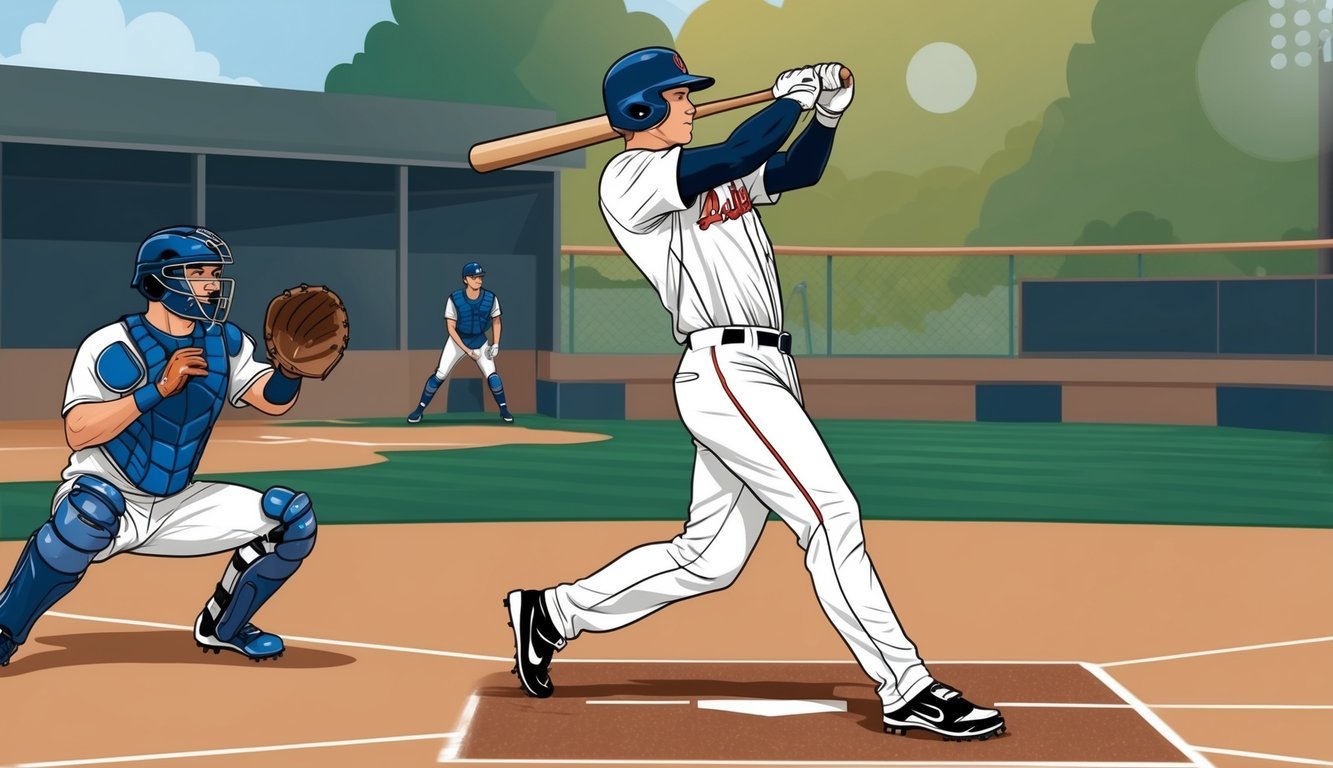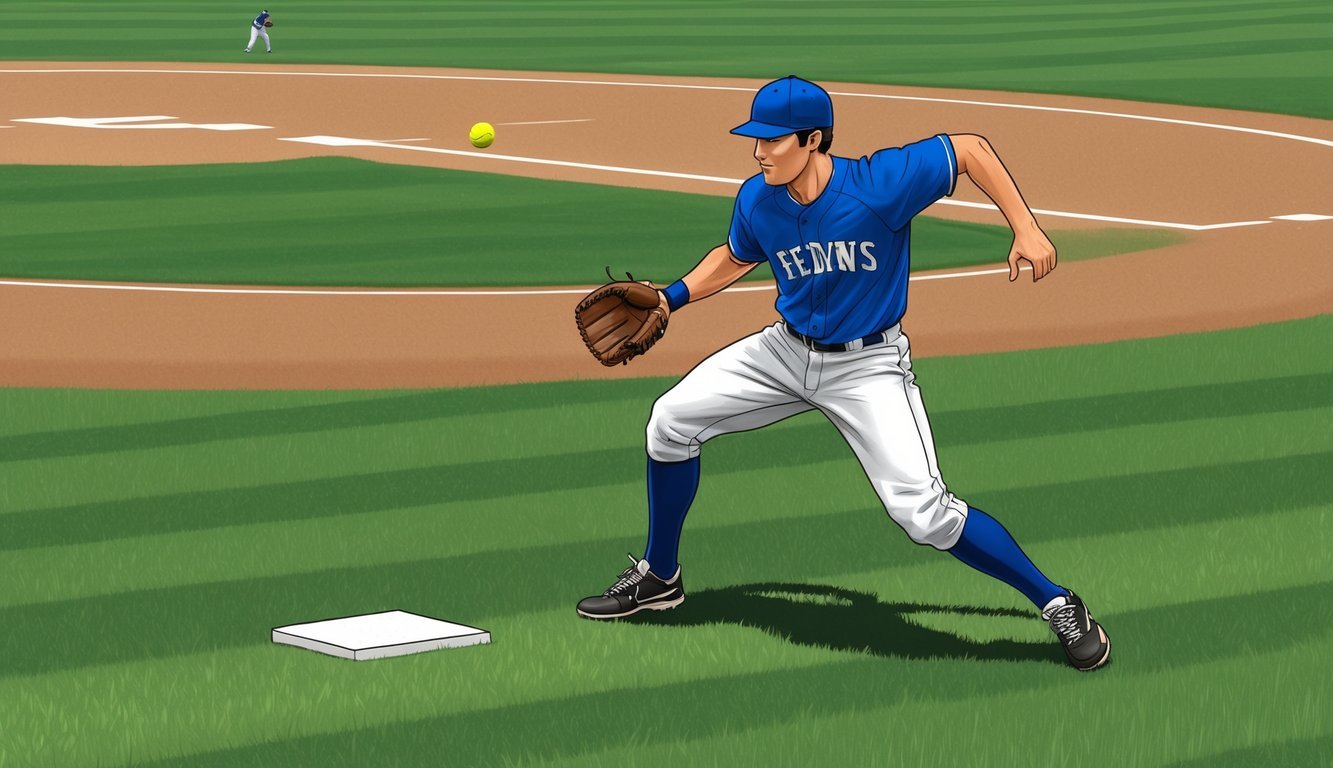Baseball is a beloved sport that combines skill, strategy, and teamwork.
With its origins dating back to the 18th century, this game has captivated fans across North America and beyond.
To play baseball, two teams of nine players each take turns batting and fielding on a diamond-shaped field.
Learning the basics of baseball can be an exciting journey.
The game revolves around the pitcher throwing the ball to the batter, who attempts to hit it and run around the bases to score.
Meanwhile, the fielding team tries to catch the ball and tag runners out.
Understanding the rules, positions, and scoring system is key to enjoying the full baseball experience.
Whether you’re a complete beginner or looking to brush up on your knowledge, getting started with baseball is easier than you might think.
With the right equipment and a grasp of fundamental techniques, you’ll be ready to step onto the field and join in the fun of America’s favorite pastime.
Getting Started with the Basics
Baseball combines skill, strategy, and teamwork on a unique playing field.
To begin your baseball journey, you’ll need to familiarize yourself with the field layout, player positions, and essential equipment.
Understanding the Field and Positions
The baseball field, often called a diamond, consists of the infield and outfield.
The infield includes a square area with four bases – home plate, first base, second base, and third base.
Players must run counterclockwise around these bases to score.
The pitcher stands on a raised mound in the center of the infield, throwing balls to the batter at home plate.
The catcher squats behind home plate to receive pitches.
Infielders defend the area around the bases.
These include the first baseman, second baseman, shortstop, and third baseman.
Three outfielders cover the grassy area beyond the infield dirt.
Equipment Essentials
To play baseball, you’ll need some key pieces of equipment.
The most important are a bat, glove, and ball.
Baseball bats are typically made of wood or metal.
Choose a bat that feels comfortable and suits your strength and size.
Gloves come in different styles for various positions.
Infielders use smaller gloves for quick throws, while outfielders prefer larger gloves to catch fly balls.
Catchers use a special mitt with extra padding to handle fast pitches.
For safety, batters and base runners wear helmets to protect their heads from pitched or batted balls.
A proper uniform includes a jersey, pants, and cleats for traction on the field.
Sliding pads can help protect your legs when diving for bases.
Rules of the Game
Baseball has a specific set of rules that govern gameplay, scoring, and player actions.
These rules ensure fair competition and define how teams can win.
Objectives and Scoring
The main objective in baseball is to score more runs than the opposing team.
A run is scored when a player on the offensive team safely touches all four bases in order.
The most exciting way to score is with a home run, where the batter hits the ball out of the park.
Games typically last 9 innings, with each team getting a turn to bat in each inning.
The team with the most runs at the end of 9 innings wins.
If the score is tied, extra innings are played until one team takes the lead.
In professional games, umpires enforce the rules and make crucial calls.
They determine if pitches are strikes or balls, and if runners are safe or out on the bases.
Common Plays and Terms
A “strike” occurs when a batter swings and misses, or doesn’t swing at a pitch in the strike zone.
Three strikes result in an out.
A “walk” happens when a batter receives four balls outside the strike zone.
Batters can hit different types of balls:
- Fly ball: hit high into the air
- Ground ball: hit on the ground
- Foul ball: hit outside fair territory
Baserunners can attempt to “steal” bases when the pitcher isn’t looking.
The defensive team tries to prevent scoring by catching fly balls and throwing out runners.
A “balk” is an illegal pitcher motion that results in baserunners advancing.
Teams get 3 outs per inning before switching between offense and defense.
Batting Techniques

Mastering batting techniques is crucial for success at the plate.
Effective hitting combines proper mechanics, mental preparation, and strategic approaches to different pitches and game situations.
Improving Your Swing
A powerful swing starts with the right stance.
Feet should be shoulder-width apart, with the back foot slightly open.
Grip the bat firmly but not too tight, with knuckles aligned.
Keep your head still and eyes focused on the pitcher.
As the pitch comes, transfer your weight to the back foot.
Rotate your hips and shoulders together, bringing the bat through the strike zone.
Follow through with your swing, extending your arms fully.
Practice hitting off a tee to perfect your mechanics.
Focus on making solid contact with the ball’s center.
Use a batting cage to work on timing different pitch speeds.
Wear a properly fitted batting helmet for safety.
Experiment with various bat weights to find the right balance of power and control.
Advanced Batting Strategies
Reading pitchers is a key skill for advanced batters.
Watch for patterns in pitch selection and body language.
Look for tells that might indicate what type of pitch is coming.
Adjust your stance based on the situation.
Choke up on the bat for better control with two strikes.
For power hitting, widen your stance slightly.
Practice hitting to all fields.
Pull inside pitches, drive outside pitches to the opposite field.
This makes you a more versatile and unpredictable hitter.
Work on situational hitting.
Learn to bunt effectively for sacrifices.
With runners in scoring position, focus on making contact rather than swinging for the fences.
Mental preparation is crucial.
Visualize success before stepping into the batter’s box.
Stay confident and focused, even after striking out.
Remember, even the best hitters fail most of the time.
Pitching and Catching Mechanics

Pitching and catching form the backbone of baseball defense.
These skills require precision, strategy, and physical prowess to excel.
Mastering these skills takes years of practice, with players refining their techniques as they progress through different levels of play.
One key factor that influences a pitcher’s development is the pitching mound distance by age, which gradually increases to match players’ growing strength and ability.
Understanding these distances helps coaches and athletes adjust their training and strategies for optimal performance.
Mastering Various Pitches
Pitchers use different types of throws to keep batters guessing.
The fastball is the most common pitch, thrown with maximum velocity.
Curveballs involve a spinning motion that makes the ball dip as it approaches the plate.
Sliders move laterally, while changeups are slower pitches designed to disrupt timing.
Proper grip is crucial for each pitch type.
Pitchers practice finger placement on the seams to achieve desired movement.
Arm angle and release point also play key roles in pitch effectiveness.
Mechanics start from the rubber.
Pitchers must avoid balks by maintaining a set position before delivery.
The windup involves a full body rotation, while the stretch is a quicker motion used with runners on base.
Control is essential.
Pitchers aim for the strike zone, trying to avoid walks.
They often work the edges of the plate to make hits difficult.
The Art of Catching
Catchers are the field generals, coordinating defensive strategies.
They use specialized mitts to handle high-speed pitches and foul tips.
Proper positioning behind the plate is crucial for framing pitches and protecting against wild throws.
Catchers must master the skill of blocking.
This involves using their body to stop pitches in the dirt, preventing passed balls.
Quick reflexes are needed to react to unexpected bounces.
Throwing is another key aspect.
Catchers need strong, accurate arms to catch base stealers.
They practice quick releases and footwork to improve throw times to second base.
Signal calling is a mental challenge.
Catchers study opposing batters and work with pitchers to select the right pitches.
They must also be adept at mound visits to calm or strategize with their pitcher during tough situations.
Fielding Fundamentals

Mastering fielding techniques is crucial for defensive success in baseball.
Proper positioning, quick reactions, and solid mechanics help players make plays and prevent runs.
Infield Defense Strategies
Infielders must stay alert and ready to react at all times.
They should position themselves based on the batter and game situation.
When fielding ground balls, players should charge the ball, keeping their glove low to the ground.
Using two hands helps secure the ball and prepare for a quick throw.
Footwork is key.
Infielders should take short, quick steps as they approach the ball.
For a smooth transition to throwing, they should field the ball slightly to the glove side.
This allows for a natural flow into the throwing motion.
Communication is vital among infielders.
They must call for pop-ups to avoid collisions.
On double plays, smooth exchanges between the shortstop and second baseman can make or break the play.
Outfield Play Techniques
Outfielders cover large areas of grass, so they need to have good reads on fly balls and line drives.
They should start in a ready position, on the balls of their feet.
As the ball is hit, they should take a quick first step in the right direction.
For fly balls, outfielders should run to where the ball will land, adjusting their path as needed.
It’s often helpful to run with an arm raised to block the sun.
When catching, they should use two hands for extra security.
On ground balls, outfielders should charge aggressively to field the ball cleanly.
They can use a sliding catch or field it like an infielder, depending on the situation.
Strong, accurate throws are essential, especially to cut down runners trying to take extra bases.
